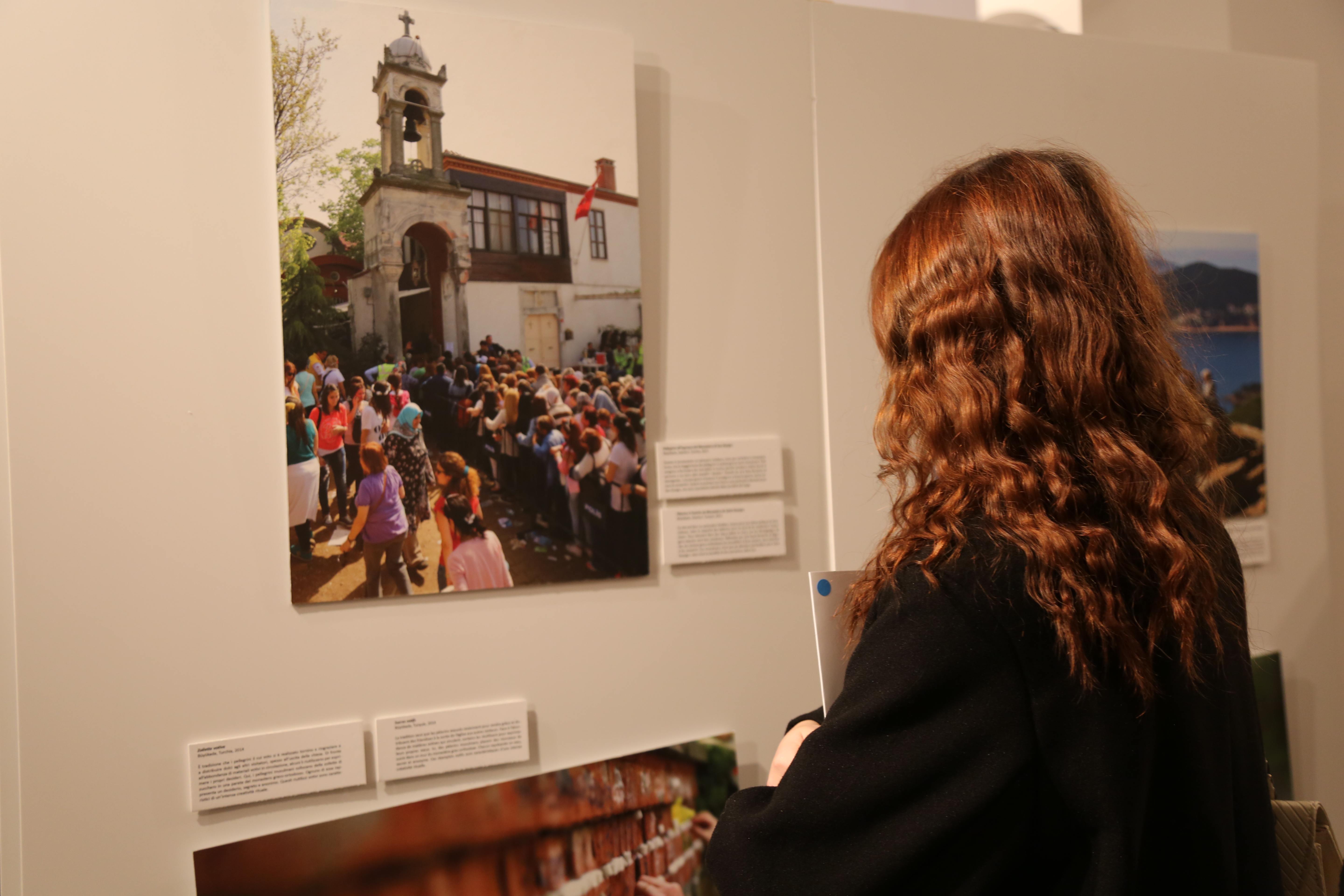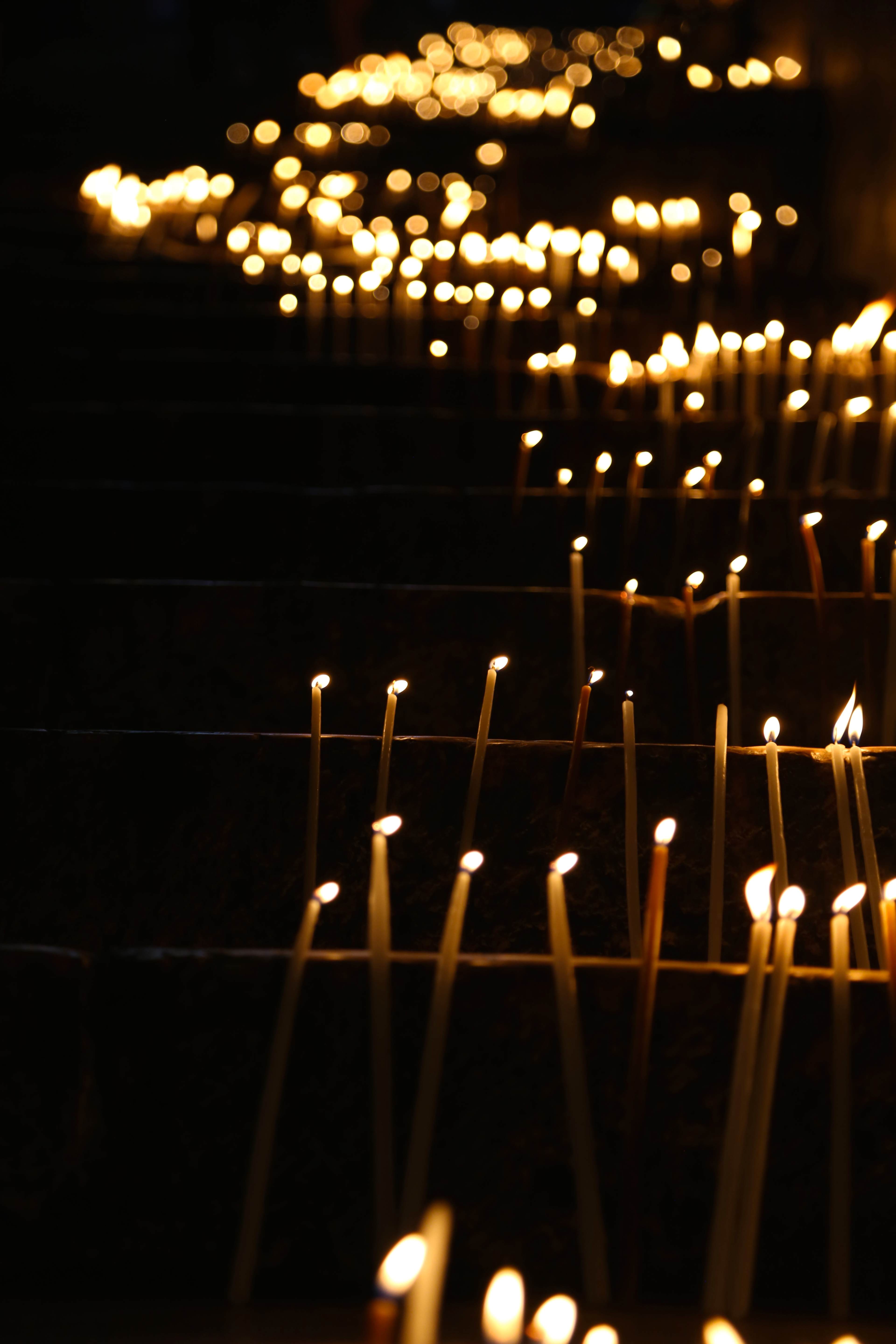An Ethiopian Christian woman praying in the Cave of the Patriarchs | Photo: © Pénicaud
Other faithful devoted to Islam visit the crypt of the Basilica of the Nativity in Bethlehem, at the center, like many Marian churches in the Mediterranean, of pilgrimage by Muslims. On the other hand, mentioned more often in the Koran, where she figures 34 times, compared to 19 in the New Testament, Mary embodies a model of feminine perfection as the mother of the prophet Jesus.
An Ethiopian Christian woman, in the heart of Hebron (Palestine), prays with her forehead leaning against the wall of Rebecca’s cenotaph in the Mosque of the Cave of the Patriarchs, a sanctuary divided in 1967 into two areas: one for Muslims, the other for Jews .
A color dialogue, in the name of anthropology, comes to life until January 19 in the gallery of the École française de Romein Piazza Navona, where a studied installation of 35 photographs accompanied by videos and information panels, offers the public an interreligious journey among the interweavings woven by the Mediterranean Sea, a sea that unites, made up of bridges rather than barriers, and where religions they can represent an ideal meeting place.

Preparation of the exhibition Shared Sacred Places | Courtesy École française de Rome
Inviting all guests to take a step to the side, the itinerary, curated by the anthropologist Dionigi Albera and the anthropologist and photographer Manoël Pénicaud, weaves a pilgrimage through images around a plural Mediterranean, urging us to move from a sacred place to other. Scanned into four sections – Saints and Prophets, Christian Mary, Mary Muslim, Architectures, Actors and mediators – the exhibition belies the common sense according to which a sanctuary can only be inhabited by one religion. Indeed, it is not uncommon for the faithful to temporarily cross borders to pray in places that belong to another creed. Without aspiring to conversion, many of them are looking for a grace that they often ask of common saintly figures such as Abraham, Mary, Saint George, the Seven Sleepers.
Thus it happens to meet, in the Ghriba synagogue, a Jewish and a Muslim woman in prayer, barefoot, side by side, in front of the eastern wall, in the direction of Jerusalem, indistinguishable from each other, or some Sufi women in waiting to prostrate herself in Mary’s room, near Ephesus, where the virgin is said to have ended her days.
After Marseilles, the Bardo Museum in Tunis, and again Thessaloniki, Paris, Marrakech, New York, Istanbul, Ankara, the traveling exhibition Shared Sacred Places he stops in Rome with the hope of returning to the capital, perhaps set up in one of the many museums of the Eternal City.

Bas-relief in the church of the Aiguebelle Abbey | Photo: © Manoël Pénicaud
“It would be nice, perhaps in 2025, the holy year, to set up this exhibition in one of the museums of Rome, when interreligious dialogue will be a strong theme of the next jubilee” hopes the director of the École française de Rome, Brigitte Marin.
The exhibition is part of the ambitions of the École française de Rome which, since 1875, the year of its foundation, has had as its fundamental mission research and research training in the fields of archeology, history and other human and social sciences, from prehistory to the present day, spreading new knowledge to a diverse audience, built on the basis of modern technology.
“The images – explains Brigitte Marin – are the product of up-to-date, current research, made from investigations on the ground and with methods that underpin our disciplines, in this case ethnography and anthropology, aimed at observing gestures, the behavior of people, words, and to bring back these contents with photography through an explanation that contextualizes them and allows us to understand their full scope. The public is thus invited to make a journey in the Mediterranean, a pilgrimage to discover gestures and practices that are familiar and at the same time are not, experienced by believers of other religions”.

Pilgrimage to the Sepulcher of Mary | Courtesy École française de Rome
The title of the exhibition, in French Lieux saints partages, invites us to dwell on the double meaning of “partagés”, which alludes to division and sharing at the same time, urging us to grasp those practices of coexistence and proximity which are expressed in the search for grace. Conceived specifically for the Roman exhibition, the set-up, which in its various stages presented different variations, does not neglect Italy, rather it is contextualized by making a lunge on some elements capable of speaking more to the Italian public.
Thus we reach Lampedusa, an island which remained deserted for several centuries, and where, at least in certain periods, the only human presence was that of a Christian hermit, guardian of a small chapel dedicated to the Virgin, which also includes the tomb of a Muslim saint. Turkish and European sailors who stopped on the island to stock up on water and food visited the sanctuary leaving offerings. In the 1840s, when the island was colonized by the Kingdom of the Two Sicilies, the Muslim part of the chapel was destroyed, the sanctuary was restored several times, but still today the memory of the double cult survives on the island.
For the curators Dionigi Albera and Manoël Pénicaud, another sacred place expression of the Italian Mediterranean is the Boat of the Holy Family rescuing a migrant, an original nativity scene presented by some Calabrian artisans to Pope Francis in 2013 during his visit to Lampedusa.
We meet Sister Carol as she reads the Koran in her room in the monastery of San Salvatore, in Cori, immortalized under a Muslim rosary and an Islamic miniature representing the miraculous Nativity of Jesus.
“The exhibition – explains Dionigi Albera – is an invitation to look at otherness in a different way, which is not always a threatening figure”. An otherness that also finds expression in the architecture of the Mediterranean. “One of the photographs on display – continues Albera – depicts a mosque in Thessaloniki designed in the early 20th century by an Italian architect for a group of Muslims who were Jews who converted to Islam in the 17th century. Here the architect has also introduced some stars of David”.
The exhibition, with free admission, will be open from Monday to Friday, from 10 to 19, Saturday from 10 to 13, with the exception of 24 December.
![]() Read also:
Read also:
• The korai of Medma printed in 3D come alive at the École française de Rome

